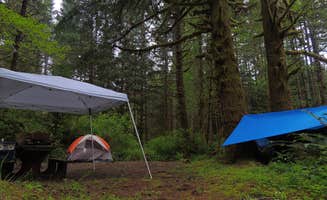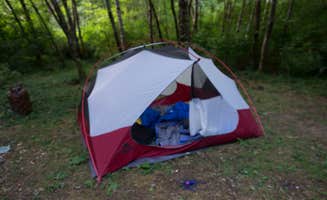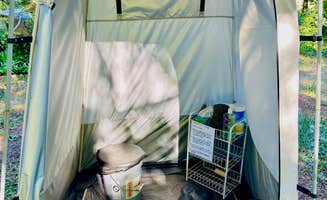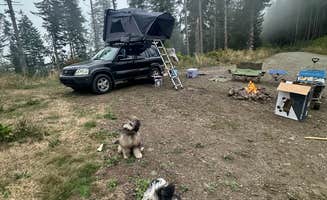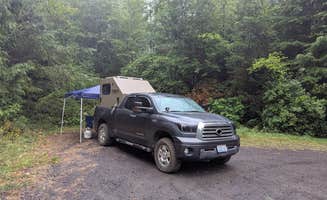Tent camping options near Monroe, Oregon primarily consist of forested sites within the Siuslaw National Forest. Elevation varies from 800 feet at riverside camps to over 4,000 feet at Marys Peak, affecting temperatures and camping conditions throughout the year. Most dispersed camping areas require high-clearance vehicles, with rough forest roads leading to secluded sites.
What to do
Waterfall hiking trails: At Alsea Falls Recreation Site, hiking trails lead to multiple cascades beyond the main falls. "If you venture further, about 2 moderate miles, you find 'Green peak falls' which for my money is a way better experience. Well worth the extra time and effort," notes one camper who explored beyond the main attraction.
Botanical exploration: Marys Peak Campground offers access to unique alpine flora in designated botanical gardens. "There are many trails and also botanical garden. On a clear day you can see snow cap mountains and the ocean in July," shares a visitor who appreciated the diverse plant life.
Non-motorized boating: Upper Lake Creek - Hult Reservoir provides quiet water recreation opportunities. "No motorized boats. Dispersed camping. Excellent hidden creek water... Nature trails. Canoe. Kayak. Fish," explains a camper who enjoyed the peaceful setting.
What campers like
Forest seclusion: The forest roads near Beaver Creek offer true isolation for tent campers. "Turn left and there are three more sites, two are a few minutes down this other road... Very quiet, lovely views of the sky at sunset," explains one camper about the dispersed camping layout.
Small campgrounds: Many tent campers appreciate the limited number of sites. "Only about 10 sites here, the camp host was very nice and sold us firewood! Not a very busy campsite but it is pretty," reports a visitor to Big Elk Campground, noting its quiet atmosphere.
Creek access: Several sites feature stream or river access. "On the alsea river bank can fish for salmon from location. Very private and relaxing way to get a way from the city," describes a camper who stayed at a riverside site.
What you should know
Primitive facilities: Most sites have basic amenities only. "This is a cozy little BLM managed campground with 16 total sites... The grounds offer two pit toilets that were kept very clean, water bibs, dish water dumps, along with fire pits and picnic tables at all sites."
Limited cell service: Communication is restricted in this mountainous region. "There is no cell service in camp or along most of the 60-mile C2C (Corvallis to Coast) Trail," notes a hiker at Big Elk Campground.
Road conditions: Access to the best tent camping near Monroe, Oregon often requires careful driving. "Narrow and unpaved road. Very narrow, my trailer could barely fit through and there was only a three-way intersection inside to make a U-turn," cautions one camper about Forest Road 51.
Tips for camping with families
Choose established campgrounds: For families, developed sites offer needed amenities. "The grounds offer two pit toilets that were kept very clean, water bibs, dish water dumps, along with fire pits and picnic tables at all sites," explains a camper describing the facilities that make family camping easier.
Trail difficulty awareness: Some hiking paths may challenge younger children. "The hiking trails can be challenging in parts so beware if you have small kiddos," advises a visitor to Alsea Falls.
Secure sites early: Popular locations fill quickly during peak season. "I was lucky to snag a site at 1 pm on a July weekday, so I imagine it would be difficult later in the day or on a weekend," warns a camper about summer availability.
Tips from RVers
Site size limitations: Most tent camping areas near Monroe have constraints for larger vehicles. "Sites are few and are pretty small so if you have a larger rig you might want to pass on this one," advises an RVer.
Leveling challenges: Many forest campgrounds feature uneven terrain. "The sites are on a slope which makes it a little challenging but well worth it," notes a camper at Marys Peak, highlighting a common issue at mountain campsites.
Alternative locations: When forest roads prove too narrow, consider campgrounds closer to highways. "I probably wouldn't do this if I had a trailer or an RV, but my Toyota Corolla did just fine," explains a tent camper about Forest Road 51, suggesting larger vehicles seek alternative locations.


